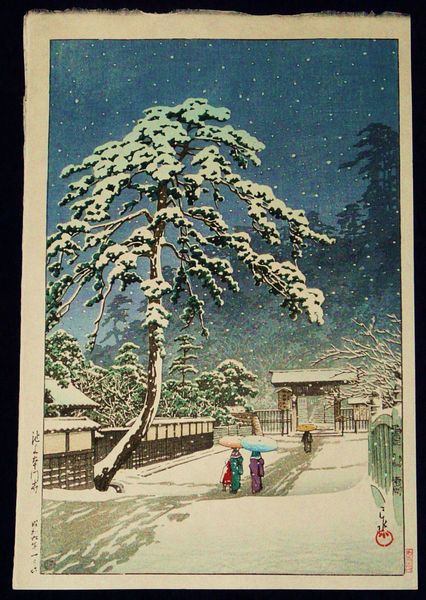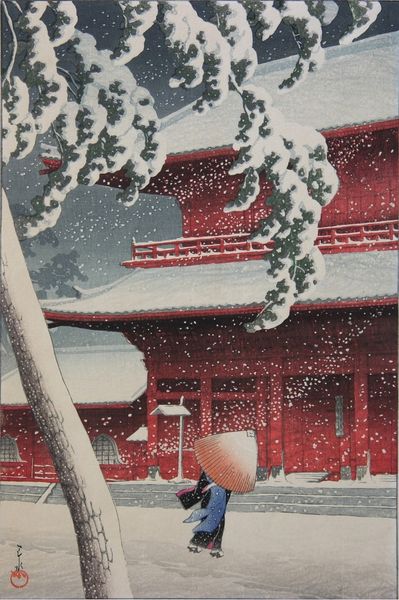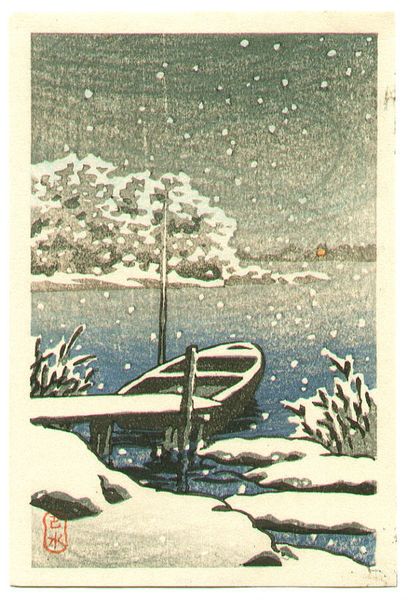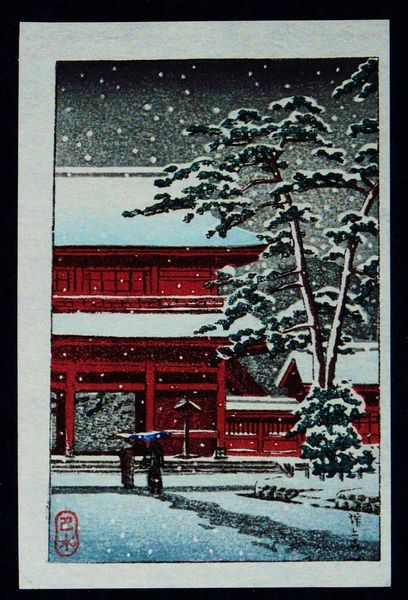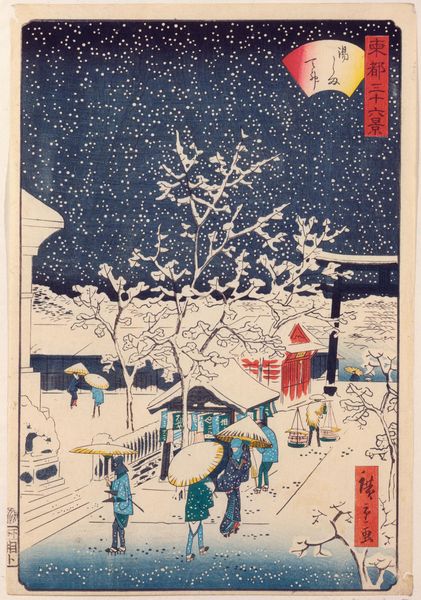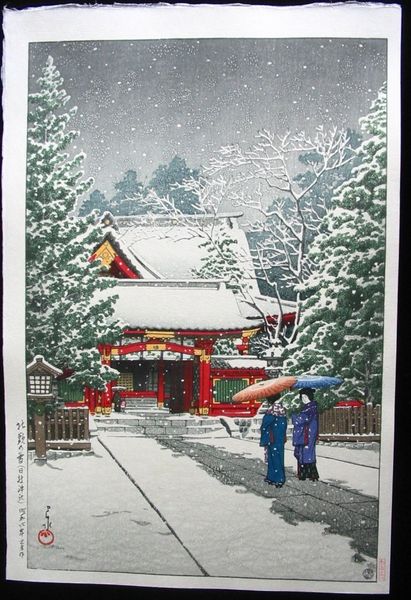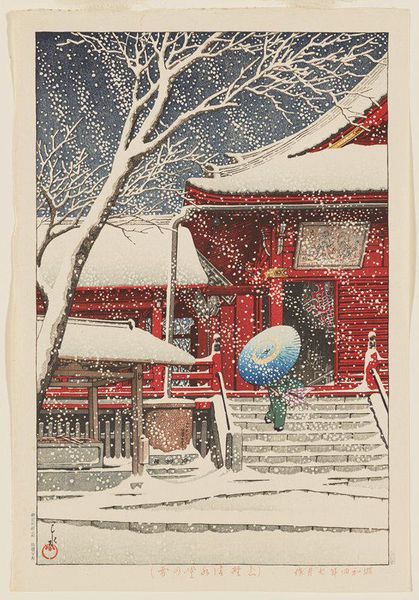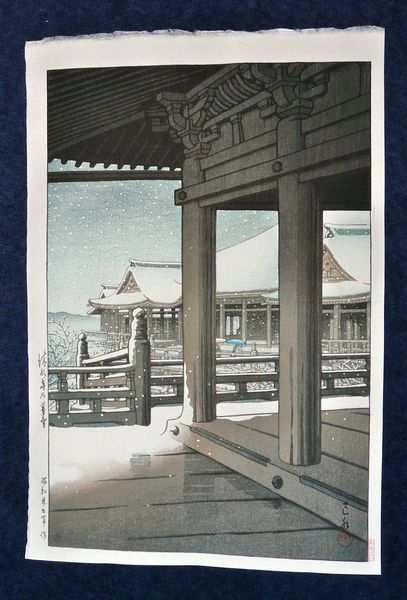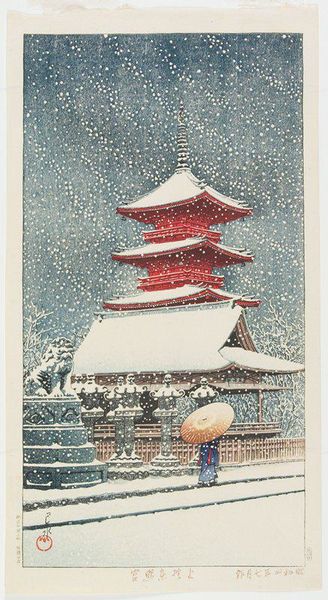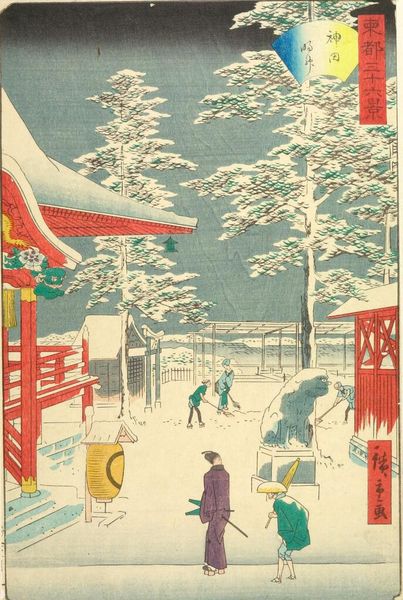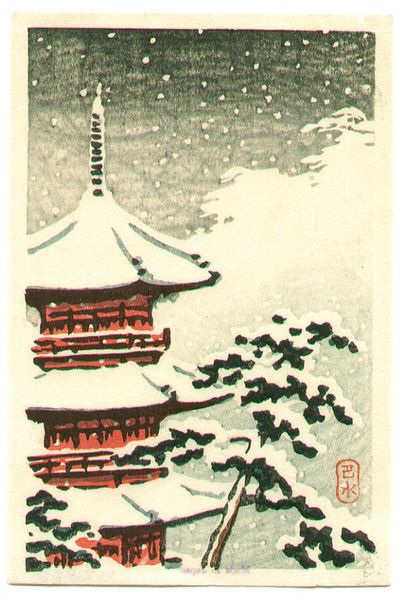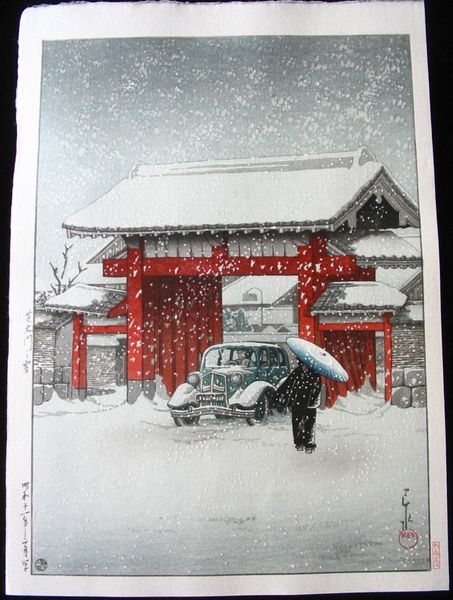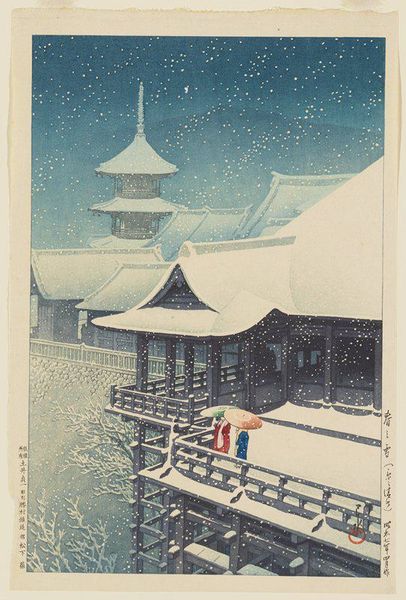
Copyright: Public domain Japan
Curator: The sheer volume of snowflakes conveyed in this image is breathtaking. The artist really captures that serene silence of a heavy snowfall. Editor: Indeed. What we’re observing is Hasui Kawase's "Snow at Shirochi" from 1925, an exemplary woodblock print within the shin-hanga, or "new print" movement. This work merges traditional ukiyo-e aesthetics with modern impressionistic sensibilities. Curator: Woodblock, huh? It’s impressive to see that kind of subtlety achieved through printmaking. All those soft gradients, the textures. It seems painstakingly crafted. Editor: Absolutely. The shin-hanga movement saw a resurgence of traditional techniques, but also addressed rapid urbanization and societal change. Here, the almost overwhelming snow, that quiet erasure, could be seen as commentary on the relentless forces of nature impacting daily life and built environments. Note how small we render the human figures here against the landscape and this dramatic snowfall. Curator: I'm interested in the choice of perspective. The high vantage point makes me think of surveillance, though maybe that's projecting contemporary anxieties onto it. It emphasizes how the inhabitants are subjected to their external environment. What labor would it have required to create all the wood blocks required for a piece as involved as this? Editor: It is likely an oblique reference to cultural and personal identity in pre-war Japan, where traditional customs were being reshaped by new influences and technologies. And it's valid to acknowledge the manual skill inherent in crafting these woodblocks. The labor-intensive process, a team endeavor requiring a designer, engraver, printer and publisher is an exercise in traditional craft-making—the end product, accessible fine art, would be sold for consumption. Curator: The two tiny figures—with their respective red and yellow umbrellas. What are they alluding to, do you suppose? Perhaps hope that things can carry on even amidst difficult times. Editor: Perhaps also representing the quiet, stoic resilience of individuals negotiating a world constantly in flux, finding vibrancy and small pockets of identity within an often austere social landscape. I think we should consider all of these points as possibilities within a culturally and historically nuanced artwork. Curator: Agreed, well said. This print has prompted me to think more deeply about our interaction with our immediate environments. Editor: And I leave this artwork considering the tension between enduring traditions and society's relentless tides of change. Thank you.
Comments
No comments
Be the first to comment and join the conversation on the ultimate creative platform.
